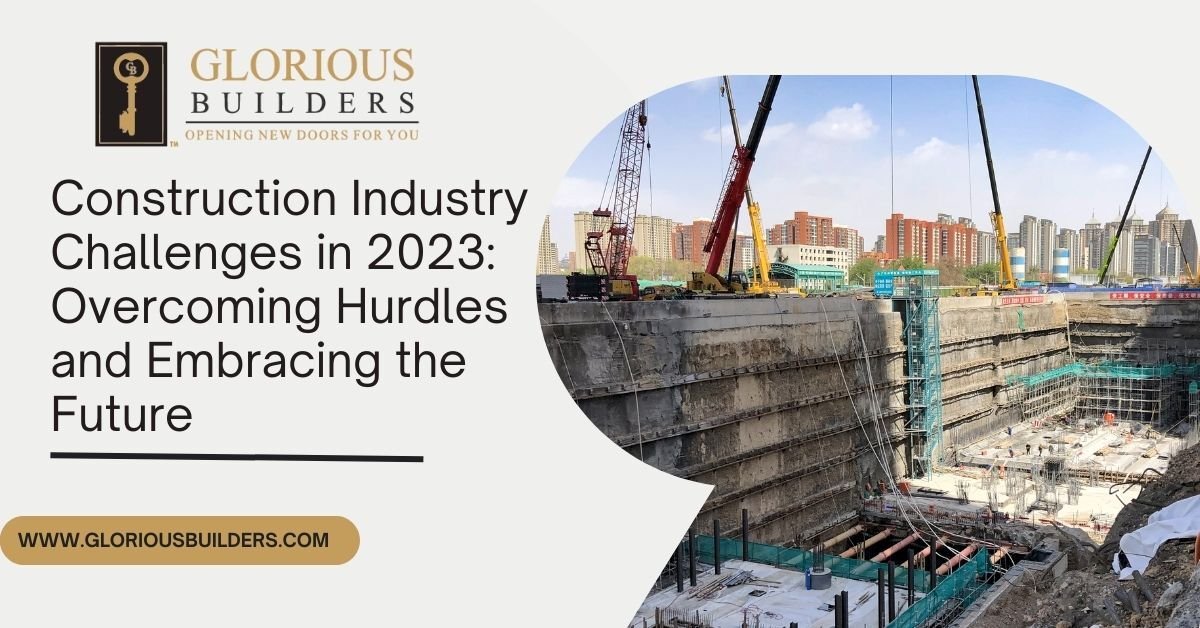Construction Industry Challenges in 2023: Overcoming Hurdles and Embracing the Future
Introduction: The construction industry plays a vital role in economic development but has challenges. As we enter 2023, the construction sector faces a unique set of hurdles requiring careful consideration and proactive strategies. In this article, we will explore the critical challenges faced by the industry, delve into prospects, and highlight the latest trends shaping the construction landscape.
The construction industry faces a myriad of challenges that demand innovative solutions and a proactive approach to ensure sustained growth and development. One of the most prominent hurdles is the ongoing labor shortage. Skilled workers are becoming increasingly difficult to find, resulting in project delays and cost overruns. To overcome this, companies are turning to technological advancements like automation, artificial intelligence, and robotics to streamline processes and improve productivity.
Another significant challenge is the escalating costs of construction materials. Fluctuating prices and supply chain disruptions have put immense pressure on construction budgets. To address this, industry leaders are exploring alternative materials and sustainable practices, aiming to reduce costs and minimize environmental impact.
Additionally, the industry grapples with the imperative to adopt greener practices. Increasing awareness of climate change and sustainability has driven demands for eco-friendly and energy-efficient construction solutions. As a result, companies are investing in green building certifications and incorporating renewable energy technologies into their projects.
Challenges in the Construction Industry:
The construction industry encounters challenges hindering progress and profitability. Let’s take a closer look at the prominent challenges that need to be addressed:
- Skilled Labor Shortage: Finding professional and experienced labour has been an ongoing challenge for the construction industry. With technological advancements and an ageing workforce, a significant shortage of qualified workers leads to project delays and increased labour costs.
- Rising Material Costs: Construction materials, such as steel, cement, and lumber, have experienced a significant price surge. Factors like supply chain disruptions, increased demand, and trade tariffs have contributed to these rising costs, impacting project budgets and profitability.
- Project Delays and Budget Overruns: Construction projects often face delays due to adverse weather conditions, regulatory approvals, and unforeseen site challenges. These delays can lead to budget overruns, strained client relationships, and a negative impact on project timelines.
- Safety and Risk Management: Ensuring the safety of workers and managing risks on construction sites remain top priorities. Construction companies must implement robust safety protocols, provide comprehensive training, and adopt technology-driven solutions to minimize accidents and potential liabilities.
The Future of the Construction Industry:
Despite the challenges, the construction industry is poised for growth and transformation. Several trends and developments shape its future:
- Technological Advancements: The construction industry is experiencing a digital revolution by adopting technologies like Building Information Modeling (BIM), drones, robotics, and augmented reality. These innovations enhance project planning, collaboration, and efficiency, resulting in cost savings and improved outcomes.
- Sustainable Construction Practices: Environmental concerns are driving the adoption of sustainable construction practices. Green building certifications, energy-efficient designs, and eco-friendly materials are becoming standard practices driven by regulations and consumer demand.
- Modular and Prefabricated Construction: Modular and prefabricated construction methods offer speed, cost savings, and enhanced quality control. These off-site manufacturing techniques are gaining popularity, allowing for quicker project completion, reduced waste, and improved predictability.
Latest Trends in the Construction Industry:
Staying abreast of the latest trends is crucial for construction companies to stay competitive. Here are some noteworthy trends:
- Embracing Virtual Reality (VR) and Augmented Reality (AR): VR and AR technologies provide immersive experiences for design visualization, client presentations, and training simulations. Construction companies leverage these technologies to enhance communication, minimize errors, and improve project understanding.
- Building Information Modeling (BIM) Adoption: BIM facilitates comprehensive project management by creating 3D models encompassing design, construction, and maintenance information. Its implementation helps optimize resource allocation, clash detection, and project coordination.
- Off-Site Construction and Prefabrication: Off-site construction and prefabrication offer advantages such as faster project delivery, reduced site disruptions, and improved quality control. This approach is gaining traction as it allows for simultaneous on-site and off-site work, saving time and minimizing disruptions.
Conclusion: As we navigate through 2023, the construction industry faces its share of challenges. Construction companies can overcome these hurdles by addressing the skilled labour shortage, managing rising material costs, and implementing robust safety measures. Embracing technological advancements, sustainable practices, and the latest industry trends will position them for success in a dynamic and evolving landscape. With strategic planning and proactive measures, the construction industry can unlock its full potential and thrive in the future.






